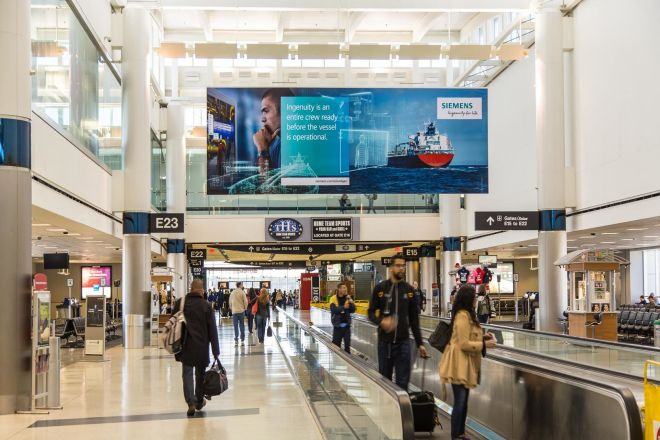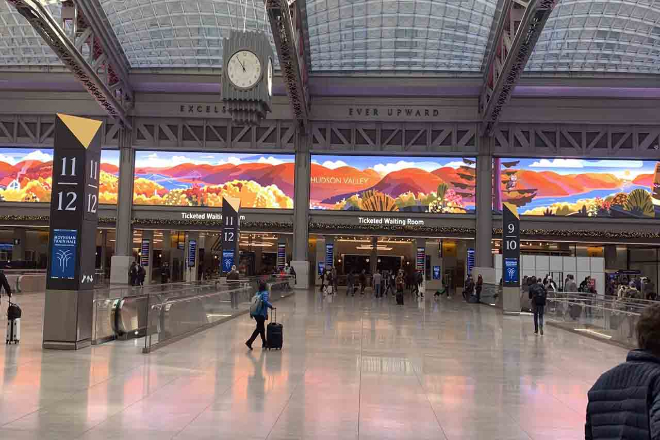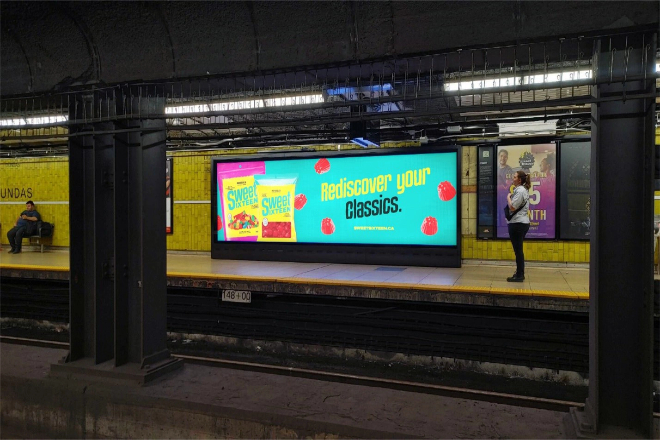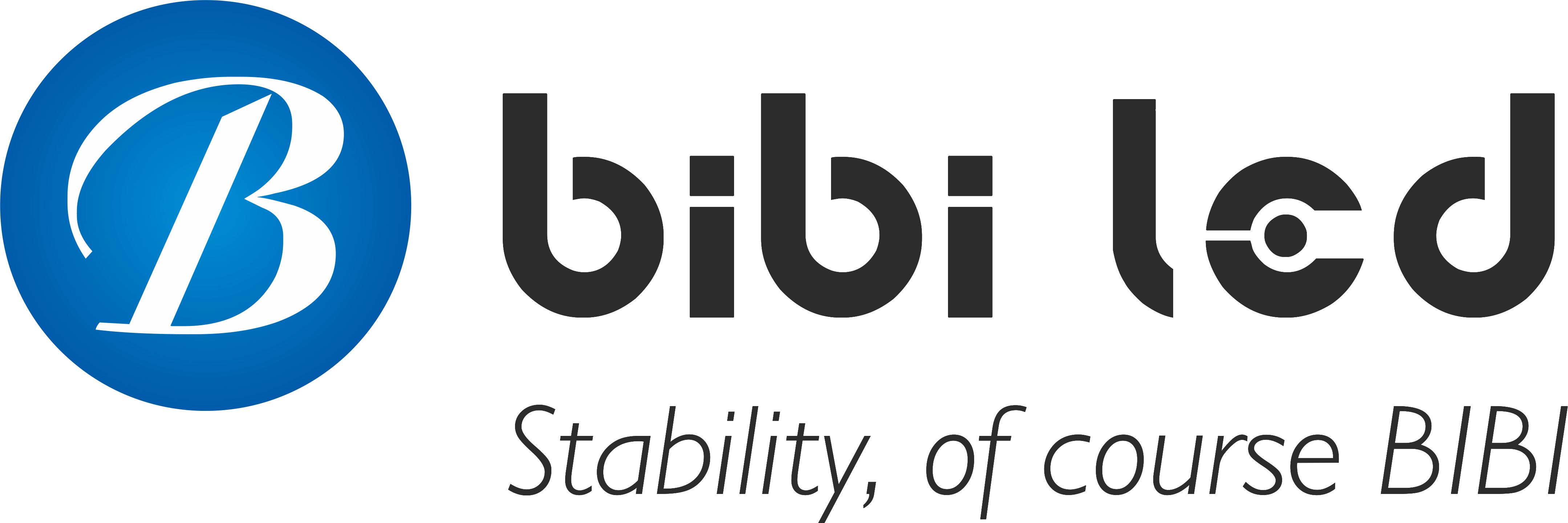Introducción

As an important place with dense traffic and frequent information exchange, the quality and effect of its information display system will directly affect the travel experience of passengers and the operational efficiency of transportation hubs.
Small pitch LED screens, with their advantages of high resolución, alto brillo, and high contrast, have become an ideal choice for information display in transportation hubs.
So, how should transportation hubs choose small pitch LED screens that suit them?
Tabla de contenido
Step 1: Clarify the application requirements of small-pitch LED display screens in transportation hubs
1). Analysis of usage scenarios
Speaking of transportation hubs, they are really varied. Aeropuertos, railway stations, bus stations, and subway stations all have their own unique flavors and needs.
In the airport hall, people come and go, and everyone is in a hurry to catch the plane. At this time, a high-brightness, high-resolution LED screen is particularly important.
It must clearly tell passengers flight information, whether the boarding gate has changed, and where to pick up luggage.
In the waiting area, passengers are bored waiting, and a large screen plays some advertisements or entertainment programs to make everyone happy, and time passes quickly.
In the security check area, a small LED screen can do the job, pointing out the security check process and providing safety tips, which is simple and practical.
- Train station/bus station:
In the waiting hall, passengers are most concerned about the train/bus schedule, whether it is easy to buy tickets, and how to get to the platform. The LED screen must make all this information clear.
At the entrance and exit, a screen is placed to tell passengers what the weather is like outside and whether the road is congested. It is very considerate.
- Subway station:
On the platform, when the train arrives and where the next stop is, this information must be updated in real-time, and the LED screen must keep up with the rhythm.
In the passage/transfer area, passengers must know how to transfer and which line goes to which place, and the LED screen must clearly indicate it.
2). Information display content
The content displayed on the LED screen is also varied:
Flight/train schedule: This must be made clear; the font must be large, and the refresh must be fast so as not to make passengers wait impatiently.
Advertisement: This must be eye-catching, full color, high brightness, and have dynamic video, which is better so that passengers will want to buy after seeing it.
Aviso de emergencia: This must be fast, red or flashing, so that passengers can see it at a glance, so that passengers don’t miss important information.
Public information: What’s the weather like, what’s the news, these must be available, so that passengers can understand the outside world.
3). Viewing distance and angle
When looking at LED screens, distance and angle are very important:
If you look closer, such as the security check area and ticket window, you have to choose a small-pitch LED screen so that the details are clear.
If you look farther away, such as the hanging screen in the center of the hall, the spacing can be slightly larger, but the overall picture must still be clear and beautiful.
The direction of traffic flow and multi-angle viewing must be taken into consideration. Choose an LED screen with a wide viewing angle so that it is clear in any direction.
When placing screens at corners or corners, you must pay more attention to the viewing angle to ensure that passengers cannot see or see it crookedly.
In general, when choosing an LED screen, you need to consider the use scenario, display content, viewing distance, and angle.
It must be clear, understandable, and timely for passengers, and they must feel that the trip is quite pleasant. In this way, the LED screen can really play its role.
Step 2: Choose a high-quality, small-pitch LED display

Choosing a small-pitch LED display is not a casual thing. You have to choose carefully to ensure that you choose a good product with excellent technology and high quality. Now, I will tell you in detail how to choose.
1). Brand selection:
First, choose those small-pitch LED screens from well-known brands. Why? Because well-known brands have invested heavily in technology research and development, have strong technical strength, and can continuously launch new products and new technologies to meet the ever-changing market.
In terms of quality, well-known brands are more strictly controlled. From raw material procurement to production and processing, and then to finished product delivery, each process is strictly inspected to ensure reliable product quality.
Good reputation is also an important reason for choosing well-known brands. If you ask people who have used it or check the reviews online, most of them will give you a thumbs up, saying that their products are easy to use and durable.
In terms of service, well-known brands usually have a complete after-sales service system. If you buy a screen and there is any problem, they can solve it for you quickly, without giving you a headache and letting you use it with confidence.
2). Quality of the whole machine:
You have to choose the brand of the whole machine that is delivered pre-installed. In this way, the quality is more guaranteed.
Because the whole machine has been strictly tested and debugged by the manufacturer, it is ensured that you can use it as soon as you get it, without having to mess around with it yourself, saving a lot of trouble.
It is also important to pay attention to the CCC certification standards of the product. CCC certification is a national mandatory product certification system. If you don’t have this certification, you must not buy it.
Because it means that the product may not have been strictly tested by relevant national departments and there are safety hazards.
The quality of raw materials is also a key factor in determining product quality. Good raw materials can make good products. Therefore, when choosing a screen, you have to ask where the raw materials are from, how is the quality, and whether it meets national standards.
The production process and quality inspection system cannot be ignored. Only with a good production process can the accuracy and stability of the product be guaranteed; only with a strict quality inspection system can every screen be guaranteed to be qualified and without defects.
You can ask the manufacturer about their production process and quality inspection system or check the relevant information online.
In general, when choosing a small-pitch LED display, you have to consider the brand, the quality of the whole machine, the certification standards, the raw materials, the production process and the quality inspection system.
Only when these are passed can you buy and use them with confidence. Don’t buy a defective product to save a little money. If there is a problem at that time, it will not be worth the loss. Therefore, when choosing a screen, you must open your eyes and choose carefully!
Step 3: Detailed explanation of the core parameters of small-pitch LED display
When choosing a small-pitch LED display, don’t just look at the appearance and brand.
Those core parameters are the key to determining whether the screen is good or not. Let’s talk about these important parameters so that you can have a bottom line when choosing a screen.
Dot pitch, to put it bluntly, is the distance between LED lamp beads. Think about it: the closer the lamp beads are, the more lamp beads there are per unit area, the more delicate the picture looks, and the clarity will naturally go up.
In transportation hubs, such as airports and train stations, the large screen needs to be viewed from a distance, so the dot spacing can be slightly larger. After all, it is difficult to see details that are too fine from a distance.
But if it is a small screen like the one in the security check area, people are close to it, so you have to choose a small dot spacing so that the picture is clear and the words can be seen clearly.
Therefore, when choosing the dot spacing, you have to think about who the screen is mainly for and how far they are from the screen so that you can choose the right one.
El frecuencia de actualización is the number of times the screen refreshes the picture per second. With a high refresh rate, the picture is as smooth as flowing water, and it looks very comfortable.
The large screen in the transportation hub center must have a high refresh rate, at least 1000Hz or 3000Hz, so that whether it is playing flight information or advertisements, the picture will not be stuck, and passengers will also feel comfortable.
Imagine if you were to look at a flight information, and the screen flickered or the picture was stuck, how annoying it would be. Therefore, the refresh rate parameter cannot be ignored.
Brillo is how bright the screen is. The brightness of the LED screen used indoors must be sufficient, at least 800cd/m², so that it can be seen clearly in the dark.
If it is semi-indoor, such as where there is sunlight, the brightness must be higher, about 2000cd/m², so that no matter how strong the sunlight is, the picture will not be dark.
Contrast refers to the difference between the bright and dark areas in the picture. With a high contrast, the picture has a more layered feel and the details are clearer.
Just like when you watch a movie, you can see the details in the dark clearly, which is the benefit of high contrast.
Color gamut coverage refers to how many colors the screen can display. With a wide color gamut coverage, the picture is rich in color and looks more real and more attractive.
If the large screen in the transportation hub center has a wide color gamut coverage, the picture will be better when broadcasting advertisements or displaying information, and passengers will also feel comfortable.
Just like when you look at a painting, if it is rich in color, you will definitely be willing to take a few more glances.
In general, when choosing a small-pitch LED display, you have to consider the dot pitch, refresh rate, brightness and contrast, and color gamut coverage.
These parameters are selected, the screen looks comfortable and passengers are satisfied.
Therefore, when choosing a screen, don’t just look at the appearance and brand, you have to look at these core parameters in depth, so that you can choose a really good screen.
Step 4: Consider the installation and maintenance of small-pitch LED display screens in the center

After selecting a small-pitch LED display screen, you have to consider how to install and maintain it. After all, good things must be used well to maximize their value. Let’s talk about these two aspects.
1). Installation method:
The installation method can be determined according to the architectural structure and spatial layout of the transportation hub center.
For example, if the ceiling is high and the space is open, you can choose to hang it so that the screen looks more atmospheric and does not take up space.
If the wall is flat and there are not many obstacles, then wall mounting is a good choice. Wall mounting is simple and firm to install, and there is no need to worry about the screen falling off.
There is also embedded installation, which requires the screen to be embedded in the wall or other structure, which looks neater and more beautiful.
However, embedded installation must be planned in advance, because once it is installed, it is not easy to change.
Therefore, when choosing an installation method, you must comprehensively consider the building structure, space layout, and usage requirements, so that you can choose the most suitable installation method.
2). Maintenance convenience:
LED screens must be maintained after a long time of use, such as changing lamp beads, repairing circuits, etc. Therefore, when choosing a screen, you must consider the convenience of maintenance.
A screen that supports quick disassembly and assembly is a good choice. In this way, when maintaining, you can remove the screen without too much effort, and then install it again after repairing it, saving time and effort.
Remote monitoring and fault diagnosis functions are also very practical. With these functions, maintenance personnel do not have to stay by the screen every day. They can know the operating status of the screen in the office, and once there is a problem, they can deal with it immediately.
With improved maintenance convenience, maintenance costs are reduced. After all, if maintenance is easy, it does not take too much manpower and material resources.
In general, when installing and maintaining small-pitch LED displays, you must comprehensively consider the building structure, space layout, and maintenance convenience.
After choosing the installation method, choose a screen that is easy to maintain, so that it is worry-free to use and can maximize the value of the screen. So, when choosing a screen, don’t forget to consider these two aspects!
Step 5: Performance upgrade for transportation hubs
After choosing a small-pitch LED display and installing it, let’s talk about performance upgrades.
In places like transportation hubs, there is a large flow of people, and information is updated quickly, so the performance requirements for LED screens are higher.
We must ensure that the screen can keep up with the times and meet new needs at any time.
1). Signal compatibility:
In transportation hubs, there may be various signal sources and control systems, some old, some new, some domestic, and some foreign.
Therefore, when you choose an LED screen, you must ensure that it is compatible with all these signal sources and control systems.
Good compatibility means that there is no problem with signal transmission, the picture is smooth, and there will be no annoying things such as flower screens and flashing screens.
In this way, it is convenient and accurate for passengers to see information, and things will not be delayed due to signal problems.
Therefore, when choosing a screen, you have to ask the manufacturer what signal sources and control systems the screen supports, and whether it can be matched with the existing equipment in our center.
2). Scalability:
The development of the transportation hub center is changing with each passing day. It may be like this today and like that tomorrow. Therefore, when we choose an LED screen, we have to consider future upgrades and expansion needs.
A modular design screen is a good choice. Modularity means that the screen can be added or subtracted like building blocks, which is very flexible.
In this way, if the center wants to upgrade or expand the screen in the future, there is no need to make a big move, just add modules directly.
Also, when choosing a screen, you have to see if it is easy to expand. For example, whether new functions can be added or more signal sources can be connected, all of which must be taken into consideration.
Good scalability means that the screen can keep up with the development of the center and meet new needs at any time. In this way, we don’t have to change the screen frequently, which saves money and worry.
In general, when choosing a small-pitch LED display, in addition to considering current needs, you also have to think about future upgrade and expansion needs.
Ensure good signal compatibility and strong scalability, so that the screen can be used longer and can better serve the transportation hub center. So, when choosing a screen, don’t forget to consider these two aspects!
Step 6: Consider the cost-benefit analysis of small-pitch LED display screens

When choosing a small-pitch LED display screen, in addition to performance and quality, we have to talk about cost-effectiveness.
After all, we have to make sure that every penny spent is worth it, right? Next, let’s talk about how to do a cost-benefit analysis.
1). Initial investment:
The initial investment is the money spent on buying screens, installation, and matching equipment. We have to take into account the price of the LED screen, the installation cost, and the cost of supporting equipment and have a good idea in mind.
As for the price, you have to compare prices from three companies to see which one has the best cost-effectiveness. For the installation cost, you have to ask the installation company to see how they charge.
Supporting equipment, such as controllers and power supplies, must also be selected, but not too expensive.
Taking these factors into consideration, we can determine a reasonable initial investment budget.
2). Operating cost:
Operating cost is the money you have to spend after the screen is used. For example, energy consumption, maintenance costs, and service life.
As for energy consumption, you need to look at the power of the screen and calculate how much electricity it consumes in a day. Maintenance costs are the money you have to spend when the screen is broken or needs to be upgraded.
Service life is how long the screen can be used. You have to ask the manufacturer to see how they guarantee it.
Pay attention to these factors, and you can evaluate the long-term operating cost of the screen. In this way, you will have a clear mind when using it in the future.
3). Cost-effectiveness evaluation:
Cost-effectiveness is the ratio of performance and quality to price. You have to choose a cost-effective LED screen product based on the actual needs and budget of the transportation hub center.
How to evaluate? You can add up the initial investment and operating costs mentioned above to see how much money you have to spend in total. Then, look at the performance and quality of the screen to see if it can meet our needs.
Finally, compare and see which screen has the highest cost-effectiveness, and choose the one.
In general, when choosing a small-pitch LED display, we have to talk about cost-effectiveness. Initial investment, operating costs, and cost-effectiveness must all be taken into consideration.
In this way, we can ensure that every penny spent is worth it and choose the most suitable LED screen product for the transportation hub center.
7. Conclusión
This article elaborates on the selection guide of small-pitch LED screens in transportation hub centers.
From clarifying needs and positioning to cost-benefit analysis, to future development trends and prospects, we comprehensively explore the key factors and precautions in the selection process.
I hope this article can provide useful reference and reference for managers of transportation hub centers and LED screen suppliers.
Finalmente, si quieres saber más sobre las pantallas LED, Por favor póngase en contacto con nosotros.
